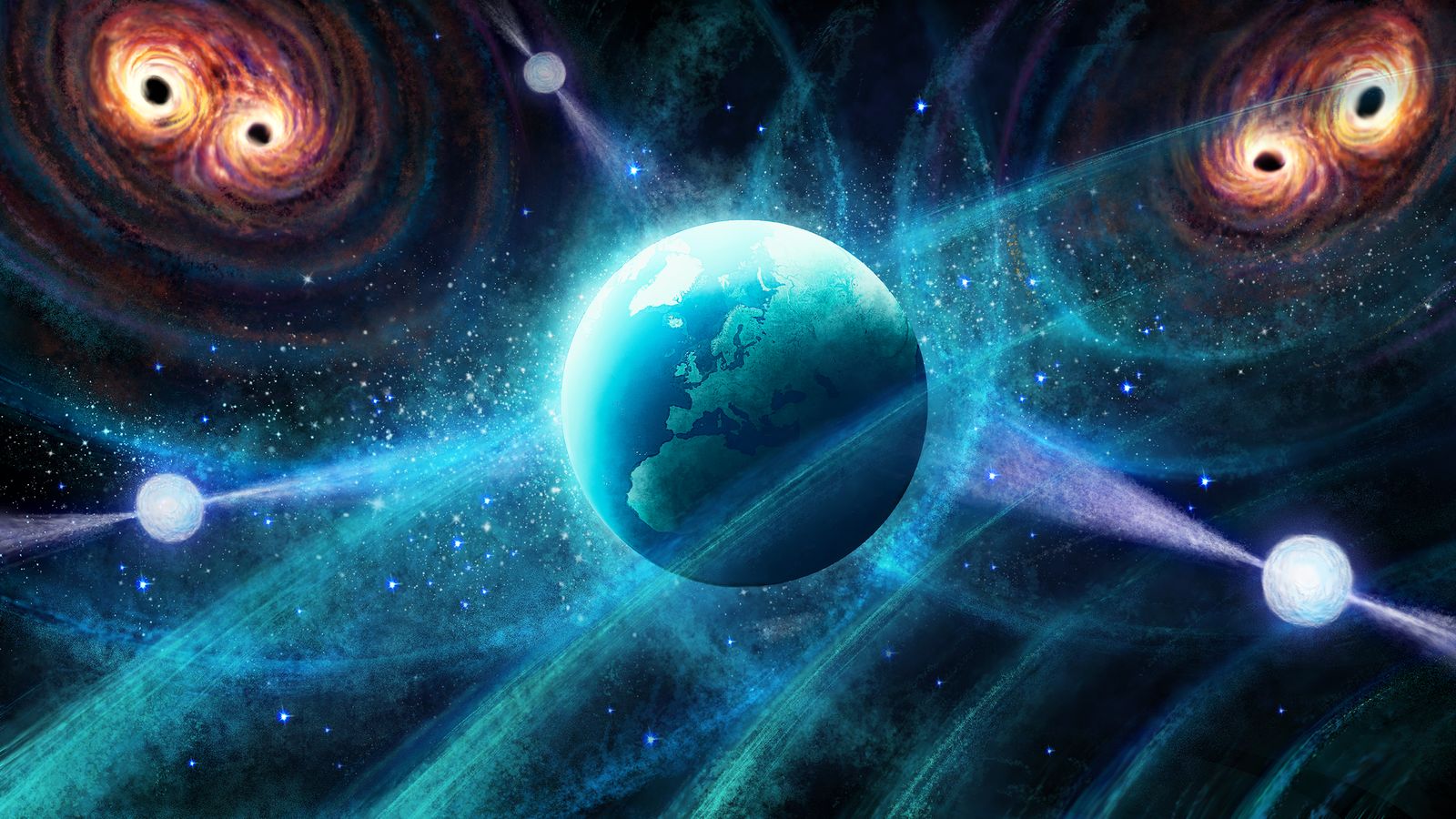Ultra-low frequency gravitational waves that could reveal universe’s secrets seen for first time
Professor Alberto Vecchio, the head of astrophysics and space research at the University of Birmingham, said the detection of ultra-low frequency gravitational waves represented the “gold-standard in physics”.
Thursday 29 June 2023 06:32, UK
Listen to this article
0:00 / 2:51
1X
BeyondWords
Audio created using AI assistance
Gravitational wave graphic. Pic: Danielle Futselaar
Image:
Gravitational waves are produced when two objects are orbiting one another. Pic: Danielle Futselaar
Why you can trust Sky News
Ultra-low frequency gravitational waves that could reveal secrets about the formation of the universe have been observed for the first time.
Astronomers saw them after 25 years of observation, using six of the world’s most sensitive radio telescopes.
They are thought to have come from pairs of supermassive black holes found in the centres of merging galaxies.
Experts at the University of Manchester, who were involved in the discovery, said it may also hold answers about individual galaxies that populate the universe – including our own Milky Way.
Dr Michael Keith, lecturer at the university’s Jodrell Bank Centre for Astrophysics, described the findings as “the beginning of a new journey into the universe to unveil some of its unsolved mysteries”.
What are gravitational waves?
They are ripples in space produced when two objects are orbiting one another – in this case, pairs of supermassive black holes, which are hundreds of millions of times the mass of our sun.
Think of the waves almost like footprints left behind when stars, planets, and other phenomena move around, which can then be studied to help paint a picture of how the universe is formed.
Ultra-low frequency waves such as those caused by supermassive black holes have long wavelengths and extremely weak frequencies, making them hard to detect.
That’s why it’s taken a quarter of a century for a team of astronomers from the European Pulsar Timing Array, along with colleagues in India and Japan, to observe them.
It also required extremely sensitive telescopes – and the six used are located around the world, including in the Netherlands, Germany, India, and at Manchester’s Jodrell Bank Centre.
More like this:
Tests begin on 3D-printed rocket engine
Astronomers make rare Star Wars-style discovery
Manchester's Jodrell Bank Observatory hosts a number of radio telescopes
Image:
Manchester’s Jodrell Bank Observatory hosts a number of radio telescopes
How were the waves spotted?
Astronomers and physicists observed an array of pulsars, which are neutron stars that emit radio waves.
Combined, the chosen pulsars – which spanned across the Milky Way – formed a galaxy-sized gravitational wave detector powerful enough to find them at ultra-low waves.
Professor Alberto Vecchio, head of astrophysics and space research at the University of Birmingham, said it represented the “gold-standard in physics”.
The next step is to expand the data collected during the experiment, exploiting an array of more than 100 pulsars, rather than the 25 used this time.
It will also mean more than double the number of telescopes used, with up to 13 in the next stage.
Related Topics
Space






























